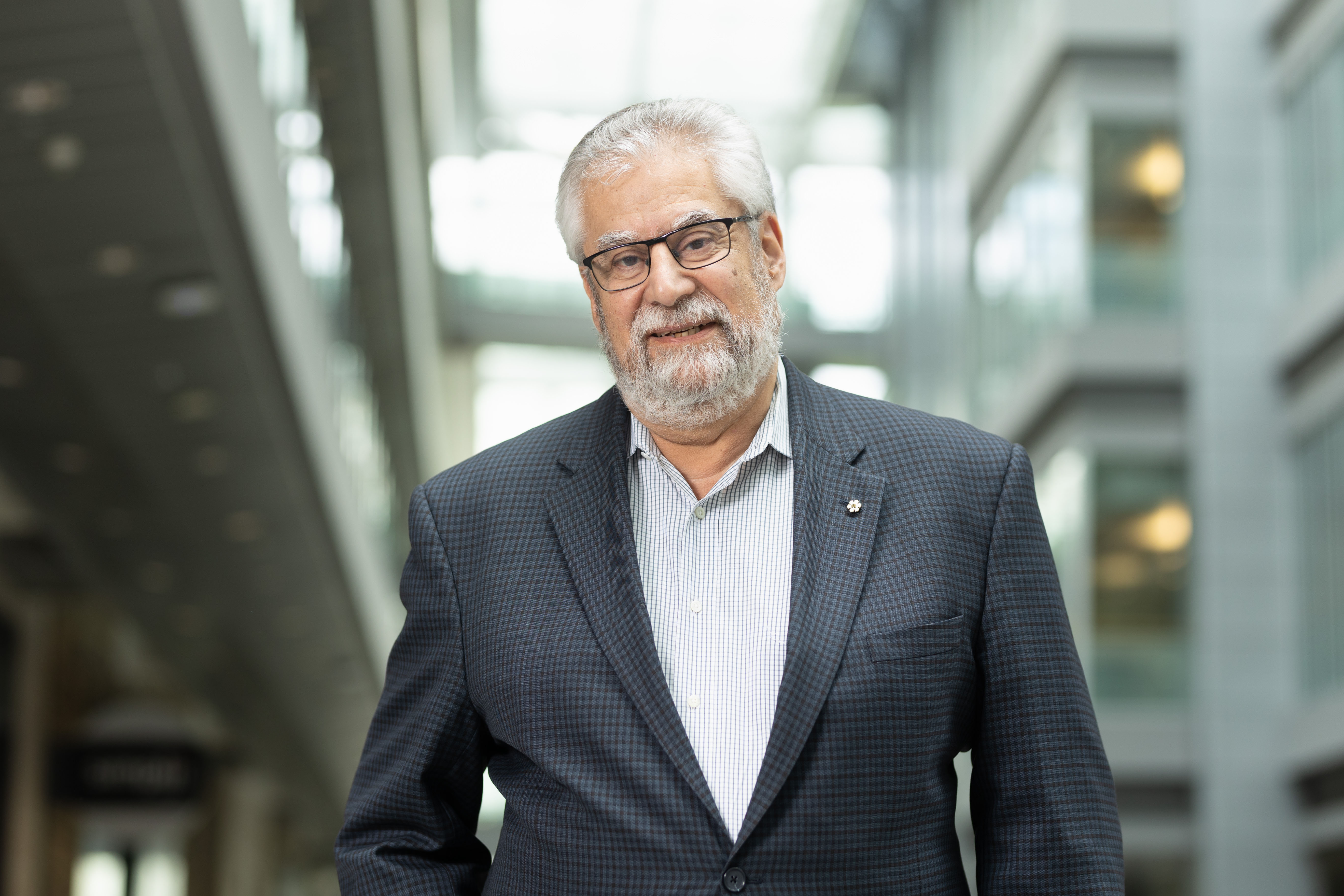Engineer Aims to Eradicate Diabetes
-
-
Slice of MIT
Filed Under
Recommended

Type 1 diabetes, which afflicts roughly 8.4 million people worldwide, was almost invariably fatal before insulin was discovered in 1921. With injections of this metabolism-regulating hormone, type 1 diabetes has become a manageable condition. But it’s still life-altering. Michael Sefton ScD ’74 wants to eradicate diabetes completely.
“That is emerging as our big, audacious goal,” says Sefton, a professor of biomedical engineering and chemical engineering at the University of Toronto and executive director of Medicine by Design, a hub that links researchers at both the university and affiliated hospitals who are working to achieve breakthroughs in regenerative medicine. “Give us 20 years.”
Already, Sefton has made significant progress. He was among the first to combine living cells with synthetic polymers in an effort to treat diabetes by transplanting insulin-producing cells. Since such cells are normally rejected by the body, Sefton developed an artificial membrane designed to encapsulate the implanted cells and thus create a barrier to the immune response.
In the future, instead of repairing, we’ll be regenerating.
“It was revolutionary at the time, but it wasn’t terribly practical,” says Sefton, whose work in this area in the 1980s helped advance the field of tissue engineering. While the membrane succeeded in protecting cells from the immune system, he explains, other problems emerged. “Ultimately it was a failure, but it opened up the idea that we can combine cells with polymers—which led to the fields of tissue engineering and regenerative medicine.”
A chemical engineering graduate of the University of Toronto, Sefton was intrigued early on by the idea of using his engineering skills to bolster human health. “I had learned as an undergraduate that there were people who were starting to apply engineering to medicine,” he says. “It was something that captured my imagination.”
Drawn to MIT by the work of Professor Edward Merrill, a chemical engineer who was breaking new ground in the nascent field of bioengineering, Sefton conducted his doctoral research on biomaterials. He then joined the faculty at the University of Toronto, where he has remained for nearly 50 years. Sefton served as director of the university’s Institute of Biomaterials and Biomedical Engineering from 1999 to 2005 and taught generations of researchers. “I’m proudest of the students that I’ve trained,” he says. “I learn more from them than they learn from me.”
Sefton’s significant research advances over the years in biomaterials, biomedical engineering, and regenerative medicine earned him a lifetime achievement award from the Tissue Engineering and Regenerative Medicine International Society in 2016. In 2017, he was named an Officer of the Order of Canada, an honor bestowed on those who have made extraordinary contributions to the nation. He is also an international member of the US National Academies of Engineering and Medicine.
Today, Sefton continues to pursue a cell-based treatment that would eliminate the need for insulin injections for people with type 1 diabetes, in which the pancreas produces little or no insulin.
His latest project involves using a novel material, developed in his lab, to enable groups of pancreatic cells, or islets, to thrive under the skin and produce insulin as needed. In animal testing, the versatile new material made it possible for transplanted cells to connect to blood vessels and regulate blood sugar, essentially functioning as a tiny artificial pancreas.
“The tissue that grows is natural, but the material that causes it to grow is a synthetic material. It causes blood vessels to grow by magic—we don’t really know why,” he says. “We realized we could exploit it to make the skin vascularized and use that for islet transplants, and we’ve been remarkably successful.”
While more challenges lie ahead, Sefton sees great promise in research advances like this one that have emerged from Medicine by Design. “In the future, instead of repairing, we’ll be regenerating,” Sefton says. “We believe this represents the future of human health.”
Photo: Neil Ta







